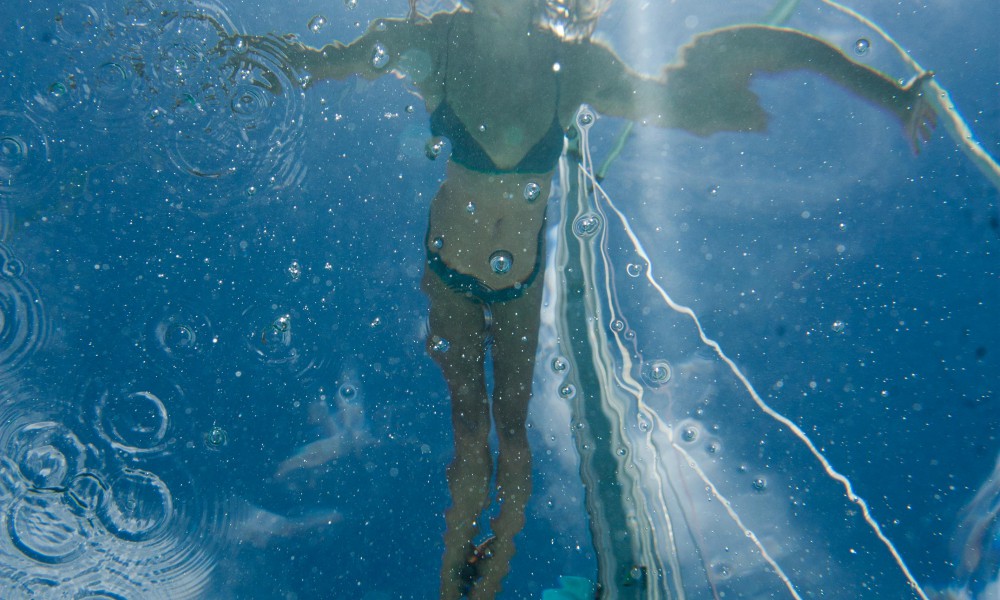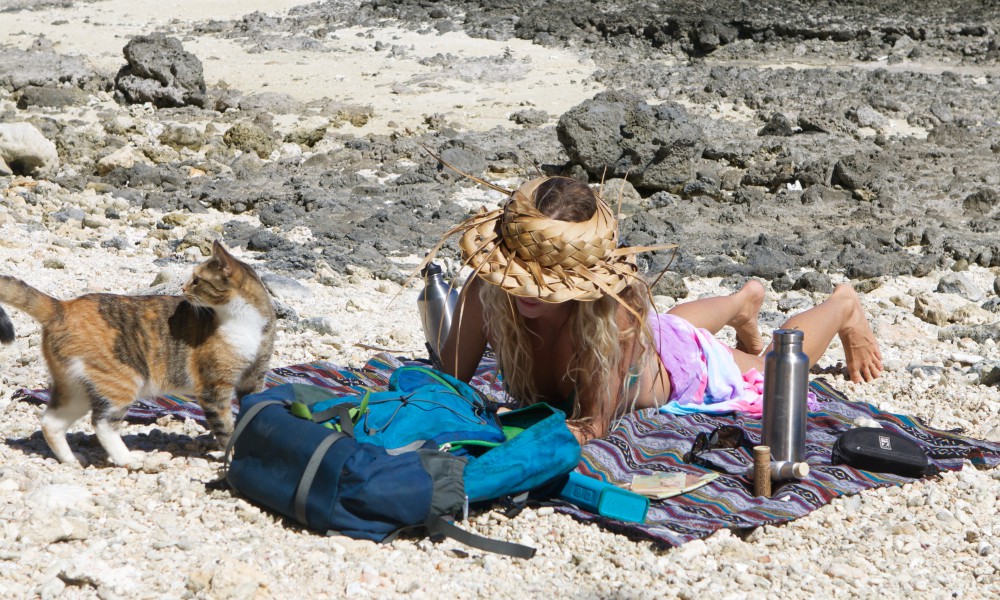
Captain Liz Clark Shares a Tip for Ocean Health
June 8 was World Oceans Day, and across this month we’ve been searching for stories that focus on the health and restoration or protection of our oceans. Most of what we discovered involved individuals and organizations focused on cleaning up the plastic and other trash that is floating around the waterways. These efforts occur at many levels, from the Bay Area’s Scott Chowning, who is cleaning up the Bay with the LADI; to Mary Crowley, who founded the Ocean Voyages Institute, which has taken literally tons of garbage out of the ocean; to The SeaCleaners with its giant catamaran known as the Manta — a ship designed to collect and process plastics while operating with a reduced carbon footprint; and The Ocean Cleanup, which aims to remove “90% of floating ocean plastic pollution.”
There are, of course, many other factors that contribute to ocean health, so we reached out to Captain Liz Clark, who, since the age of 7, has been sailing and surfing her way around the world, learning about the ocean and its environments and the best practices that we can adopt to help preserve this life-giving element. Capt. Liz wrote back and pointed out one thing that we probably rarely give much thought to, but that can mean the difference between life and death for the wide range of life forms that depend on the oceans for the continuity of their species (including humans) — sunscreen. Below is what she wrote.
“Hi, Captain Liz here. Over my years of falling in love with the Pacific, I’ve realized how important it is to do all we can, as sailors, to respect and protect the oceans we live and depend on — that includes choosing a sunscreen that is safe for the ocean and our bodies, while also being effective at protecting us from too much sun. But navigating all the sunscreen choices can be confusing! So here’s a quick guide to help you enjoy the sun safely this summer:
“Sunscreens basically fall into 2 categories: chemical & mineral.
“Chemical sunscreens are the most common and also the most harmful. They’re made from a mix of synthetic UV blockers (all those hard-to-pronounce ingredients like oxybenzone, avobenzone, octisalate, octocrylene, homosalate, or octinoxate) that work to absorb the sun’s rays. They always rub on clear. The ingredients in these chemical creams and sprays are hazardous to marine ecosystems, and they have been shown to disrupt your body’s hormone function (aka endocrine disruptors). So, it’s definitely best to avoid chemical sunscreens!”

“The second category is mineral sunscreens, which work by forming a physical barrier between the sun and your skin to deflect the UV rays. They’re made from zinc or titanium oxide, which are safe for the environment and our bodies in their natural form. But since people want non-chemical sunscreen that rubs on clear, scientists recently engineered tiny molecules of zinc and titanium into ‘nano’ form, which is 100,000 times smaller than a strand of hair! Nanoparticles haven’t been studied enough yet, but we know they absorb into the bloodstream and have been shown to adversely affect the tiniest life forms in the ocean.”

“So be suspicious of any “mineral” sunscreen that rubs on too clear; it likely uses nanoparticles. (Currently there are no laws requiring companies to label for nanoparticle use!)
“Start reading those sunscreen labels, and be wary of greenwashing; there are lots of brands trying to convince you their products are safe! If it rubs on clear, steer clear! Happy sailing!
“P.S. The brand I love and trust is called Avasol, made by a small, eco-conscious company in California.”
At Latitude 38, we don’t endorse any particular suncreen companies or brands, but we get what Capt. Liz is saying. Read the labels, do a little research of your own if you want to, but at the very least, think about how your habits affect the oceans that you love and that give you the opportunity to sail.
You can read more about Captain Liz’s sailing life and her other environmental missions on her website.

I consider this an excellent article. If companies don’t or won’t indicate nanoparticle use in sunscreens, I have a project for our university Chemistry departments: test a wide range of the most popular sunscreen products and release the findings to the public. This would further the efforts of Captain Liz Clark and simultaneously be of great value in reducing the damage to marine life. As a lifelong ( 50+ years 🙂 ) freediver (we used to just call it “snorkelling”) and sailor my potential impact on the waters of our wonderful planet matter to me greatly. Thanks to Captain Clark and Latitude 38 for bringing this to our attention!